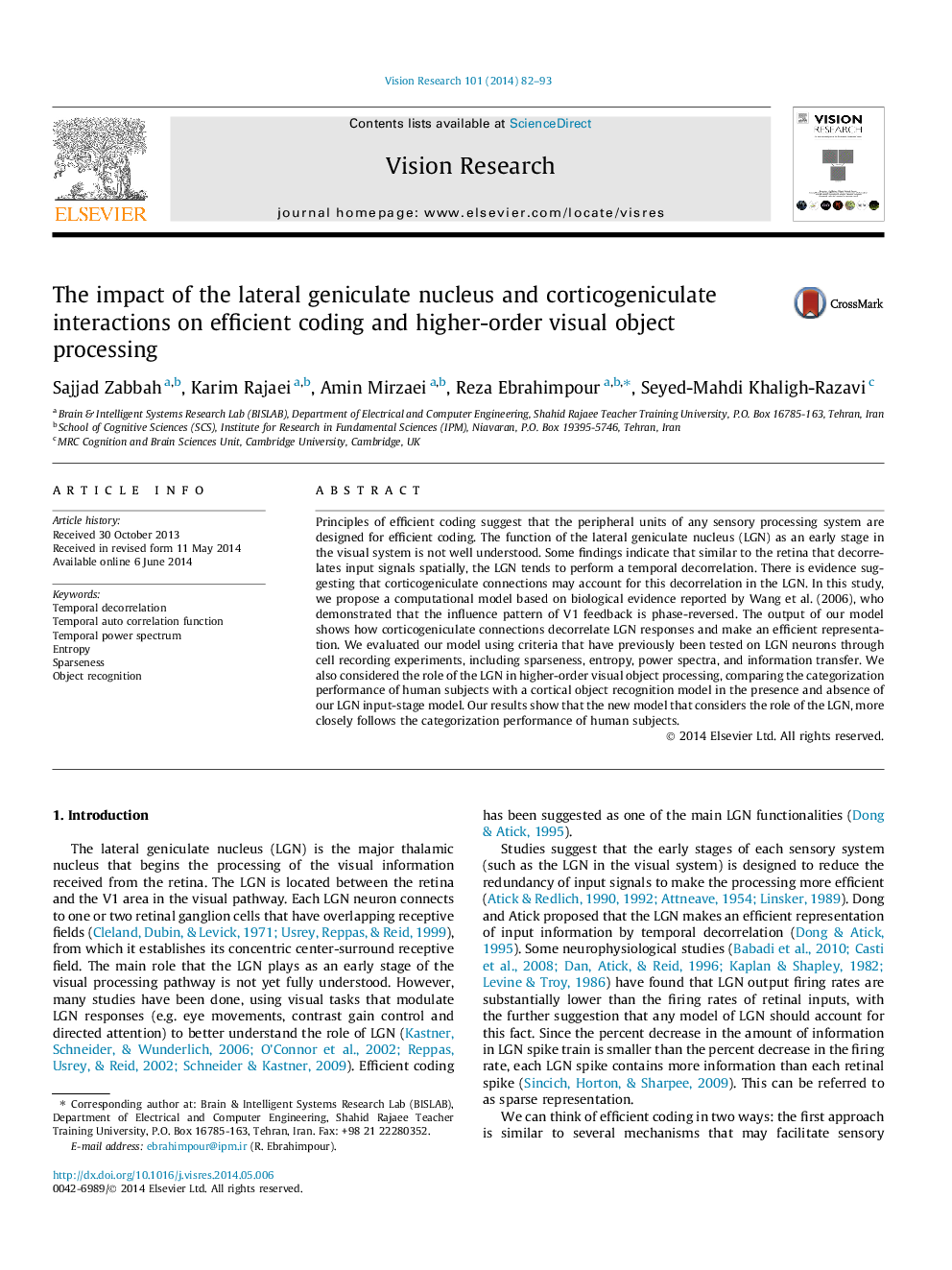| Article ID | Journal | Published Year | Pages | File Type |
|---|---|---|---|---|
| 4033716 | Vision Research | 2014 | 12 Pages |
•Corticogeniculate feedback facilitates efficient coding in LGN.•This is consistent with neurophysiological evidence of efficient coding in LGN.•Non-relay LGN facilitates object recognition in higher-level visual areas.
Principles of efficient coding suggest that the peripheral units of any sensory processing system are designed for efficient coding. The function of the lateral geniculate nucleus (LGN) as an early stage in the visual system is not well understood. Some findings indicate that similar to the retina that decorrelates input signals spatially, the LGN tends to perform a temporal decorrelation. There is evidence suggesting that corticogeniculate connections may account for this decorrelation in the LGN. In this study, we propose a computational model based on biological evidence reported by Wang et al. (2006), who demonstrated that the influence pattern of V1 feedback is phase-reversed. The output of our model shows how corticogeniculate connections decorrelate LGN responses and make an efficient representation. We evaluated our model using criteria that have previously been tested on LGN neurons through cell recording experiments, including sparseness, entropy, power spectra, and information transfer. We also considered the role of the LGN in higher-order visual object processing, comparing the categorization performance of human subjects with a cortical object recognition model in the presence and absence of our LGN input-stage model. Our results show that the new model that considers the role of the LGN, more closely follows the categorization performance of human subjects.
Graphical abstractFigure optionsDownload full-size imageDownload high-quality image (100 K)Download as PowerPoint slide
